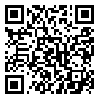Volume 28, Issue 2 (6-2022)
Back to this Issue |
Back to browse issues page
Download citation:
BibTeX | RIS | EndNote | Medlars | ProCite | Reference Manager | RefWorks
Send citation to:



BibTeX | RIS | EndNote | Medlars | ProCite | Reference Manager | RefWorks
Send citation to:
Hashemiparast M, Aliafsari Mamaghani E, Soleimani F. Severity and frequency of moral distress among nurses in clinical settings at teaching hospitals during the outbreak of COVID-19. Journal of Hayat 2022; 28 (2) :216-225
URL: http://hayat.tums.ac.ir/article-1-4557-en.html
URL: http://hayat.tums.ac.ir/article-1-4557-en.html
1- Dept. of Health Education and Promotion, School of Public Health, Zanjan University of Medical Sciences, Zanjan, Iran
2- Dept. of Nursing, Maragheh University of Medical Sciences, Maragheh, Iran ,ealiafsari@gmail.com
3- Dept. of Medical Ethics, School of Medicine, Shahid Beheshti University of Medical Sciences, Tehran, Iran
2- Dept. of Nursing, Maragheh University of Medical Sciences, Maragheh, Iran ,
3- Dept. of Medical Ethics, School of Medicine, Shahid Beheshti University of Medical Sciences, Tehran, Iran
Abstract: (1494 Views)
Background & Aim: The Covid‐19 pandemic has posed numerous ethical challenges to nurses and has exacerbated moral distress in clinical settings. Hence, due to the important role of nurses in pandemics, this study was conducted to investigate the severity and frequency of moral distress among nurses working in clinical settings at Maragheh teaching hospitals during the outbreak of COVID-19.
Methods & Materials: This was a cross-sectional study conducted on 174 nurses working in surgical-medical, intensive care, pediatric and emergency wards of Maragheh hospitals in 2020-2021. Data were collected using a demographic form and the Corley’s Moral Distress Scale.
Results: The median (Interquartile Range (IQR) = Q3 − Q1) of the severity and frequency of moral distress experienced were 54 (44-59) and 52 (43-58), respectively. The median of moral distress experienced in the intensive care and emergency wards were 56 (51-59) and 46 (43-51), which was more severe than that of in other wards. The median of frequency and severity of moral distress in men were 48 (41-59) and in women 50 (43-59), respectively, which was significantly higher than that of in women (P<0.001). The severity and frequency of moral distress had a statistically significant relationship with age, and work experience (P>0.05) so that with increasing age and work experience, the severity and frequency of moral distress decreased.
Conclusion: Given the high frequency of moral distress among nurses during the COVID-19 pandemic in specific clinical settings, the use of management strategies in order to improve working conditions and create a positive setting can be helpful. It seems that holding courses on coping with moral distress in nurses in the context of the COVID-19 pandemic is an appropriate practical solution.
Methods & Materials: This was a cross-sectional study conducted on 174 nurses working in surgical-medical, intensive care, pediatric and emergency wards of Maragheh hospitals in 2020-2021. Data were collected using a demographic form and the Corley’s Moral Distress Scale.
Results: The median (Interquartile Range (IQR) = Q3 − Q1) of the severity and frequency of moral distress experienced were 54 (44-59) and 52 (43-58), respectively. The median of moral distress experienced in the intensive care and emergency wards were 56 (51-59) and 46 (43-51), which was more severe than that of in other wards. The median of frequency and severity of moral distress in men were 48 (41-59) and in women 50 (43-59), respectively, which was significantly higher than that of in women (P<0.001). The severity and frequency of moral distress had a statistically significant relationship with age, and work experience (P>0.05) so that with increasing age and work experience, the severity and frequency of moral distress decreased.
Conclusion: Given the high frequency of moral distress among nurses during the COVID-19 pandemic in specific clinical settings, the use of management strategies in order to improve working conditions and create a positive setting can be helpful. It seems that holding courses on coping with moral distress in nurses in the context of the COVID-19 pandemic is an appropriate practical solution.
Send email to the article author
| Rights and permissions | |
 |
This work is licensed under a Creative Commons Attribution-NonCommercial 4.0 International License. |






